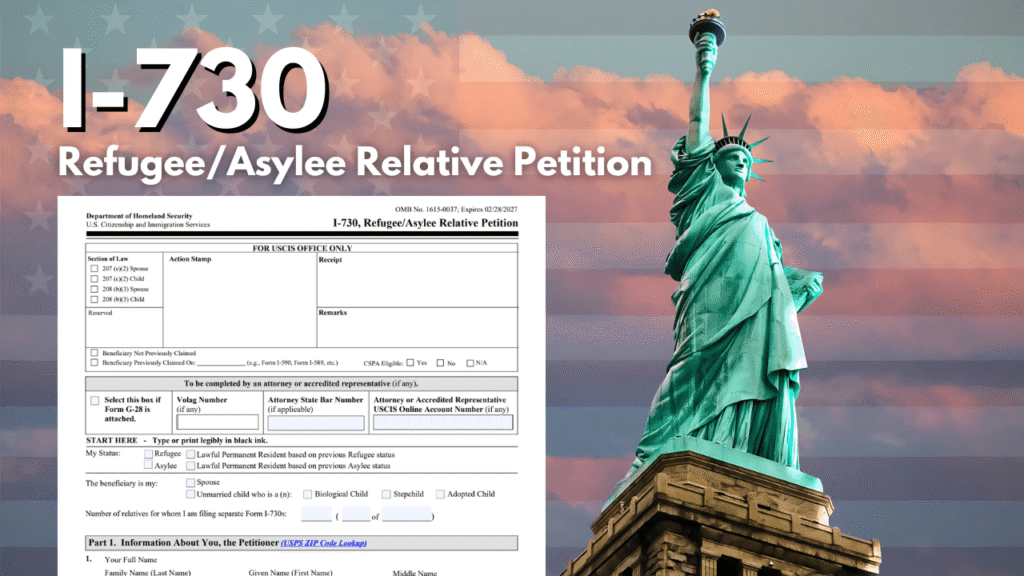A New Path to the United States,
How to Fill out Form I-730, Refugee/Asylee Relative Petition
Form I-730 process, also known as the “Refugee/Asylee Relative Petition.” This form allows individuals who have been granted asylum in the United States to reunite with close family members who are either still abroad or in the U.S. without legal status.

Forms and Document Downloads
Who Can File Form I-730?
Form I-730 is available to individuals who were granted asylum within the past two years. It enables them to petition for their:
- Spouse
- Unmarried children under 21
An important note: The age of your child is “frozen” as of the date you filed your asylum application (Form I-589). So even if your case took several years and your child is now over 21, they may still qualify based on their age at the time you applied.
In some cases, stepchildren and legally adopted children may also be eligible. However, these situations can be complex and are best reviewed by an immigration attorney.
Where to File Form I-730
Mail your petition to:
USCIS Texas Service Center
Attn: I-730
6046 N. Belt Line Rd., Ste. 730
Irving, TX 75038-0019
Filing Fee
Need to Check Filing Fees?
Use the USCIS Fee Schedule to confirm the correct fee for any immigration form.
Fee Exemptions:
- Forms or categories with a $0 fee are automatically exempt—no need to submit Form I-912.
- But remember: $0 fee doesn’t mean everyone qualifies. Eligibility depends on the form instructions and immigration regulations.
The I-730 Process in Four Steps
Let’s break the process down into four simple steps:
Step 1: Filing the Petition
The asylee (the person granted asylum) must file Form I-730 with USCIS, along with all required supporting documentation. Once submitted, USCIS will send a receipt notice confirming they’ve received your petition.
Step 2: USCIS Processing
As of October 2023, the average processing time for I-730 petitions is approximately 30 months, meaning 80% of cases are reviewed and decided within that timeframe. It’s a long wait, so patience is key.
Step 3: Approval and Forwarding
If your petition is approved, USCIS will send it to the appropriate office depending on where your family member is located:
- Inside the U.S.: The petition goes to a USCIS field office near your relative. An interview may be required.
- Outside the U.S.: The petition is sent to the National Visa Center (NVC), which forwards it to the U.S. embassy or consulate nearest your loved one. They will be required to complete a medical exam and attend a visa interview.
If approved, your family member will receive a boarding foil in their passport to enter the U.S.
Step 4: After Arrival in the U.S.
Once your family member arrives in the U.S. under I-730 status, they can apply for a green card (lawful permanent residence) after one year.
Critical Deadlines and Exceptions
- The 2-Year Rule: You must file Form I-730 within 2 years of being granted asylum. If you miss this window, you may still request an exception under humanitarian circumstances—but this requires strong justification and is best handled by a lawyer.
- Before Naturalization: You cannot file Form I-730 after becoming a U.S. citizen. Ideally, you should file and get approval before applying for naturalization. If you’ve already naturalized, you may be eligible to file a Form I-130 instead.
Need Help with the I-730?
The I-730 process can be complicated and time-consuming, but you don’t have to navigate it alone. If you’d like to speak with me or another immigration attorney on our team, feel free to call or email our office.
Thanks for visiting our site, and we hope this guide was helpful!